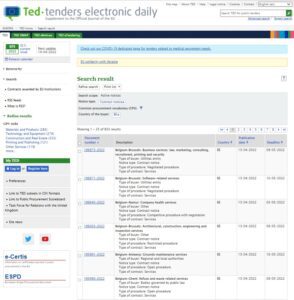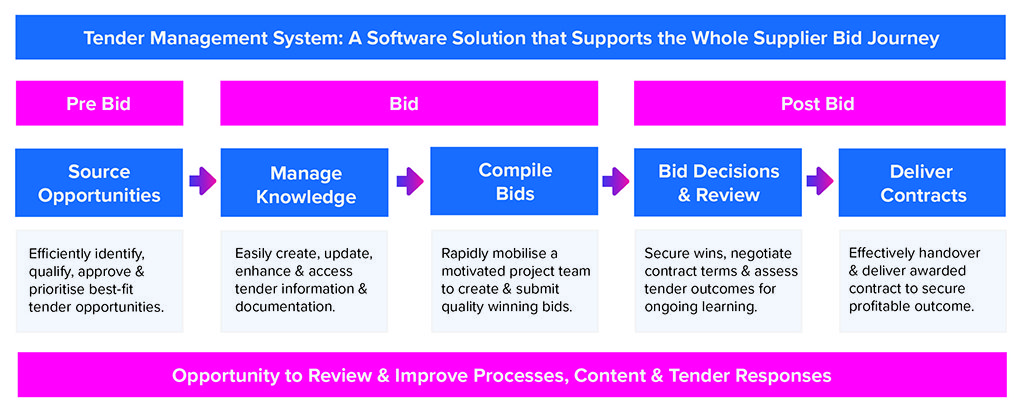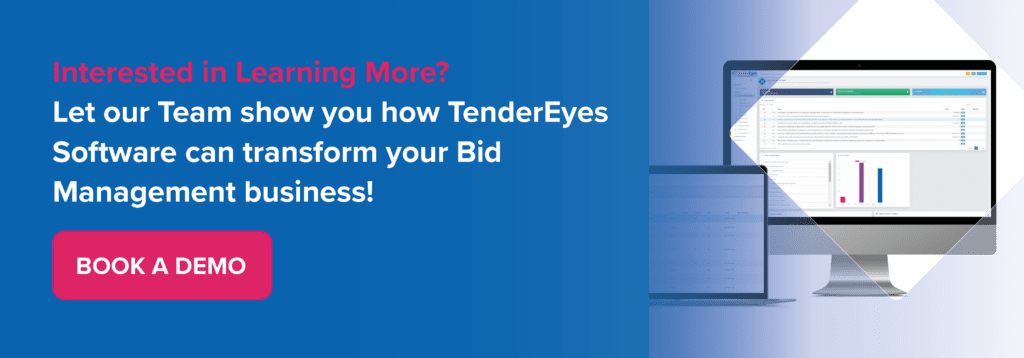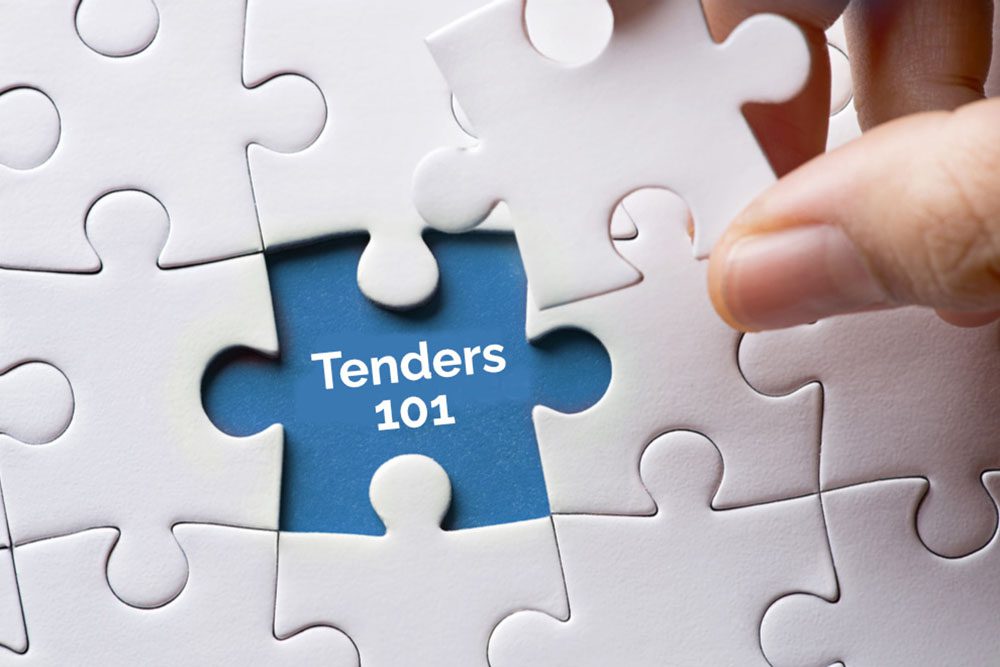What is a Tender Management System? This appears to be a straightforward question! But we know from Google search results and our own prospect enquires, it’s a little more complicated to answer.
As we discuss in this article, it is a term used in various ways by those involved in different areas of procurement and supply of products and services. Hence the confusion!
So, let’s delve into the subject and consider the definitions, purpose and functions of a ‘Tender Management System’. As well as set straight where our own TenderEyes software sits within the marketplace.
Tender Management Software Evolution
The world of software has evolved dramatically in recent times, with new technologies emerging at a dizzying pace. As businesses become more complex and global in nature, the need for software solutions to manage every aspect of business activity, has become more pressing.
Although the tender process has a long history dating back to ancient times and is a highly critical business activity, it is still very much an evolving practice.
For many years both procuring agencies and suppliers have relied on manual activities and basic generic software to manage the process. But with increasing formalisation and regulation the tender process has become more complex and challenging.
In recent years, the industry has been revolutionised by widespread adoption of the internet and more sophisticated digital communication tools. The most significant advancement has been the introduction of electronic procurement, or e-procurement, first introduced by Governments in the early 2000s.
The supplier side has been slower in adopting more holistic and sophisticated tools to manage their internal tender management activities. Many businesses are still reliant on generic business tools such as email, spreadsheets and word processing to compile tender submissions. Although this is changing rapidly as businesses look to improve their bid management practices.
Tender Management Terminology Confusion
Many business concepts and associated software, such as CRM (Customer Relationship Management) an ERP (Enterprise Resource Management) were first conceived in the 1960 and 70s. They have taken decades to develop into the well-known software acronyms of today.
So, it is with little wonder, that there is still confusion around the use of the term ‘Tender Management System’, given its infancy in development and adoption.
Certainly, this is borne out by search results given by Google and other web browsers when inputting ‘Tender Management System’ and similar terms such as ‘Bid Management System’ and variations on the theme such as ‘software’ and ‘solution’.
Results include listing by software vendors addressing the needs of those involved in:
- The supply of good and services through the proposals process
- The procurement of good and services through the tender process
- The supply of good and services through the tender process
Let’s take a closer look at the functions of these software and where we believe the term ‘Tender Management or Bid Management System’ truly sits.

1. Proposal Management – Supplier Side
The first area of confusion is that of Proposal versus Tender.
There is a proliferation of Proposal software listed under ‘Tender Management System’ and other similar Google searches.
These solutions, however, serve a different purpose. They are designed to help suppliers develop proposals, presentations, and responses to RFPs (Request for Proposals).
These documents are far less detailed and stringent, less likely to be subject to bidding regulations and contract constraints. Proposals and pricing can be changed and negotiated at any time during the process, so is far more flexible than the tender process.
The use of software solutions to assist in creating and managing proposals has gained popularity since introduction in the early 2000s. They help streamline the process, improve collaboration, and enhance the overall quality of proposals. Most solutions offer features such as pre-designed templates, content libraries, collaboration tools, version control, and automated workflows.
Businesses involved in submitting tenders may be tempted to adopt proposal software for their bid activities. But this will only help with a small part of the tender journey and require additional software and tools to manage the whole process.
2. Tender Management – Procurement Side
The second area of confusion is between the two sides of tender management – namely procurement and supply.
As already mentioned, e-procurement was introduced in the early 2000s. For example, the European Union introduced the Electronic Procurement Directive in 2004, which required all public authorities to use electronic means for public procurement above a certain threshold.
This helped to drive the adoption of e-procurement across Europe. Adoption by other regions, countries and departments, now make this a global business standard.
E-procurement platforms support different purposes in procurement.
- Government and regulatory websites and portals such as TED EU and FTS UK, where suppliers can search and find details of advertised Contract Notices to review and pursue.
- Procuring agency portals that allow suppliers to register their interest, view and download associated documentation and submit their tender responses.
- Procuring agency evaluation of submitted tenders and subsequent Contract Awards.
E-procurement has become an essential tool for businesses and public authorities looking to streamline their procurement processes, reduce costs, and improve efficiency. Software has evolved to include a range of functions, such as spend analysis, contract management, and supplier relationship management.
Given the nature of the work it is understandable that those involved in this industry sometimes refer to these solutions as ‘Tender Management Systems’.
However, for clarity, as the predominant function is procurement, the naming and positioning of such solutions need to reflect this intended use.

3. Tender Management – Supplier Side
And now to the supplier side of tender management.
This is where we see terms such as ‘Tender and Bid Management Systems’ truly sitting.
This entails the sourcing, qualification, creation, submission and delivery of won tenders by businesses bidding for Government and private sector high-value contracts.
This is the most immature market of the three mentioned above. As previously mentioned, many Bid Teams are still reliant on generic business tools. Some larger organisations have committed to the very costly route of commissioning the likes of SAP or Salesforce to build a bespoke solution. But this is a prohibitive approach for many.
Other organisations adopt generic project management tools, content management solutions or proposal software for focused activities. But these solutions only support isolated elements of the bid journey and can add to inefficiencies in the tender process.
Business are now increasingly looking to adopt a more holistic approach to managing their bidding activities through a single dedicated solution. There are however, very few dedicated software solutions available, that fully address the whole bid journey, including the final contract delivery stage as shown in the illustration below.
So Where Does TenderEyes Fit?
That’s simple, its sits within the 3rd option above. TenderEyes is a true ‘Tender or Bid Management System’. It provides suppliers with a fully integrated, end-to-end solution for the whole bid journey, including:
- Sourcing and qualifying tender opportunities
- Setting up and managing tender projects
- Creating and managing information & documentation
- Compiling and reviewing tender responses
- Collaboration and communication for all stakeholders
- Performance and results reporting and analysis
- Contracts delivery.
TenderEyes delivers powerful tools, workflow automation and AI capabilities to help streamline the tender process. It reduces repetitive time-consuming manual tasks, improves team collaboration and ensures proper approvals are secured and risks better managed.
Fundamentally, it allows Bid Teams to spend more time in crafting compelling, competitive tender responses, securing higher evaluation scores and winning more business!








